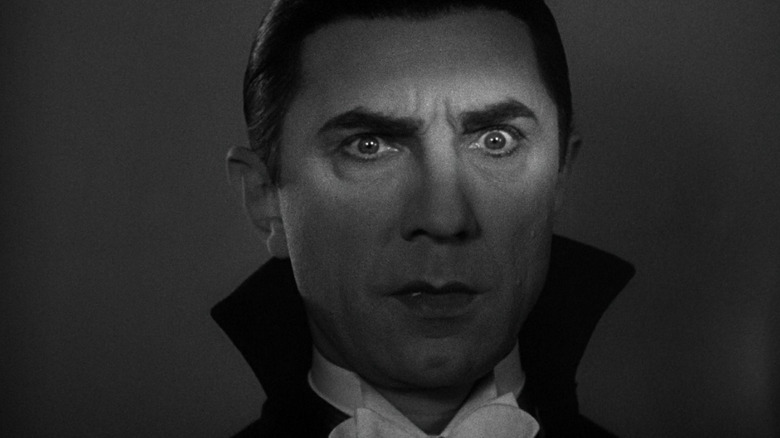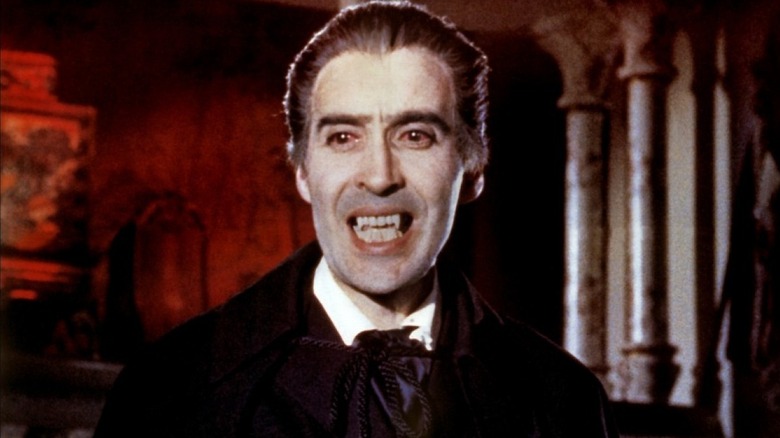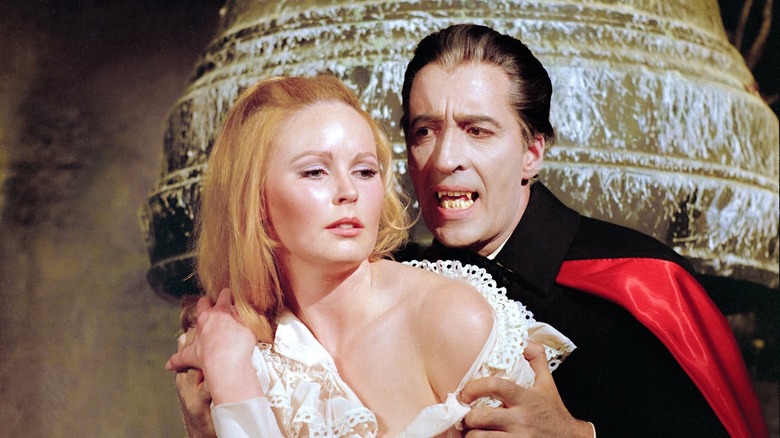How Bela Lugosi And Christopher Lee Influenced The History Of Batman
There is a great deal of controversy surrounding the creation of Batman. For many years, sole creative credit for the character was given to artist Bob Kane, who often spoke eloquently about his character. It wasn't until years later that a co-creator, Bill Finger, entered the conversation. Kane and Finger's relationship with Batman and each other is detailed in a Hulu documentary film called "Batman and Bill," and a 2012 book called "Bill the Boy Wonder: The Secret Co-Creator of Batman." It seems that Finger had a lot more to do with how audiences know Batman than Kane ever did, and only ever operated as a ghostwriter for DC Comics. Finger died in poverty in 1974. It wouldn't be until the 1980s that Kane would admit, only passingly, that Finger contributed as much as he did to the character. Eventually, Finger would be given posthumous credit. Kane himself passed in 1998 as a celebrated millionaire.
For many years Kane was the sole point of contact on all things Batman-related, and in Les Daniels' 1999 book "Batman: The Complete History," he claims to have been deeply inspired by seeing vampire movies as a youth. This is a logical assumption about Batman, seeing as he wore a black cape, skulked in the shadows, and took the form of a bat, very much like Dracula. Specifically, Kane talked about Tod Browning's 1931 "Dracula" film starring Bela Lugosi, which still holds as the gold standard for all Dracula movies that followed. Whether that was Kane's or Finger's contribution remains speculative, but the parallels are obvious regardless.
Back to the shadows
While Batman has gone through myriad iterations over the years, many artists are careful to keep the character in the shadows. A lurking, monster-like presence often accompanies him, and in several Batman feature films, he has said that he dresses in a bat costume specifically to frighten criminals. Although not always. In Tim Burton's 1989 film, Batman seems to be drawn to bats because "they're great survivors," and the 1966 Batman movie dispenses with darkness altogether, letting Batman breathe openly in the daylight.
The 1966 film and TV series were so influential that artists back at DC comics began to darken the character dramatically as a deliberate contrast to Adam West. Artist Neal Adams, who passed away in 2022, was famously put in charge of drawing "Batman" comics in the early '70s, and the writer Dennis O'Neil added a more grounded, realistic tone to the comics than previously seen. It may be Adams and O'Neil who can be credited for transforming Batman into the "standard" version of the character that most audiences know today. That is, if such a standard even exists.
It also turns out that, when Adams and O'Neil were first conceiving of their anti-Adam West version of Batman, Christopher Lee was still appearing as Dracula in a long-running series of horror movies for Hammer studios. In 1958, Lee appeared in "Horror of Dracula," which was followed by "The Brides of Dracula" in 1960, "Dracula: Prince of Darkness" in 1966, and "Dracula Has Risen from the Grave" in 1968. It was the last one that Adams and O'Neil were likely tapping into when making their comics.
Dracula Has Risen from the Grave
Most audiences are likely familiar with Bram Stoker's original "Dracula" novel and the 1931 and 1958 films adapted from it, but Freddie Francis' "Dracula Has Risen from the Grave" might prove to be a little more obscure. In the film, Dracula has been dead for years, but the local villagers still fear the long shadow cast by his old castle. Indeed, the locals refuse to attend church because of it. An itinerant exorcist tries to rid the castle of evil, but accidentally injures himself and bleeds onto the ground where Dracula was buried. The trickle of blood is enough to revive the Count, and he goes about his usual business of hypnotizing priests and attacking young maidens. The village's only hope is a young man named Paul (Barry Andrews) who is openly both an atheist and a priest who lost his faith years before.
The actual story of "Dracula Has Risen from the Grave" wasn't important to the reinvention of Batman, but in Daniels' book, Adams was quoted as saying that "that's the way Batman's cape ought to move."
Taking cues from old movies was standard for Batman. It's a well-known piece of trivia that the Joker was modeled after Conrad Veidt's character from Paul Leni's incredible 1928 film "The Man Who Laughs." In that film, a performer named Gwynplaine was attacked as a boy and had a smile permanently carved into his face. Watching the movie, one can see the Joker quite clearly in Gwynplaine's antics. Although in the movie, the man in question was a tragic figure. It was only the visuals that Bob Kane/Bill Finger referenced.


